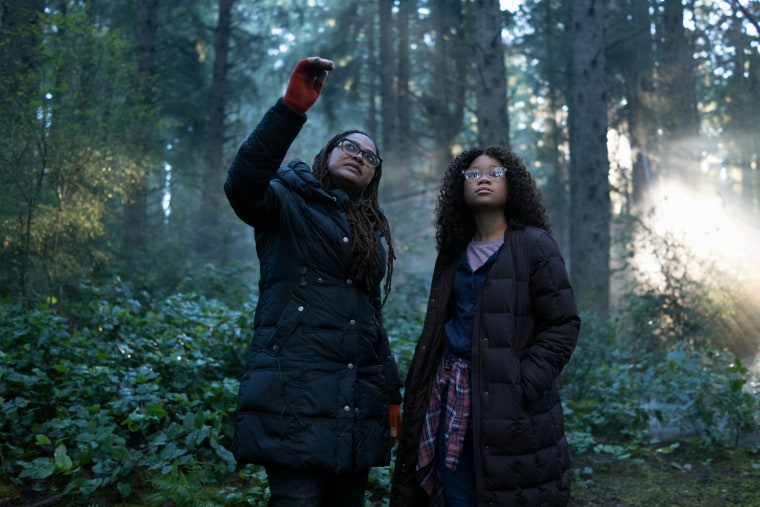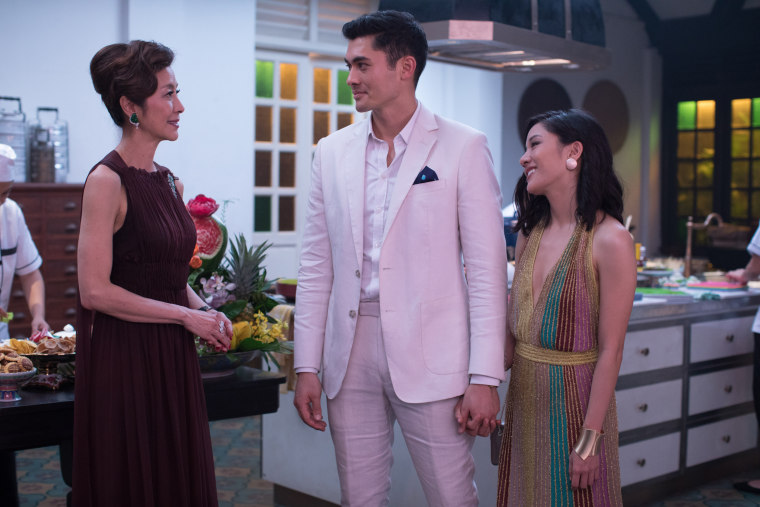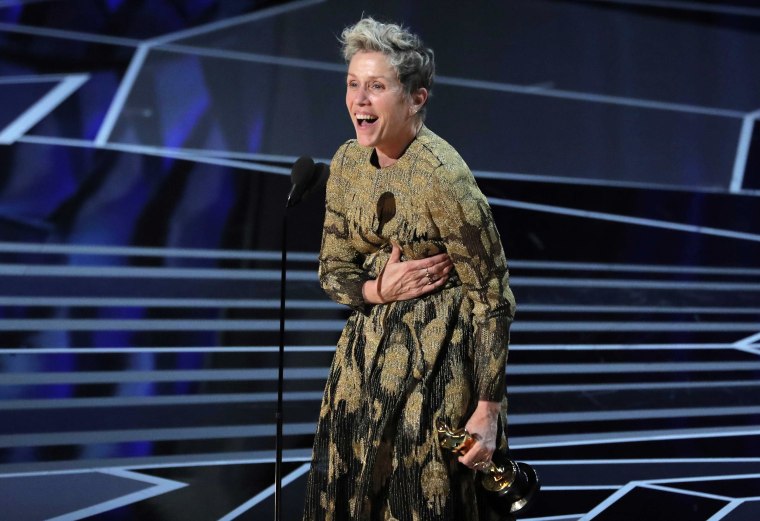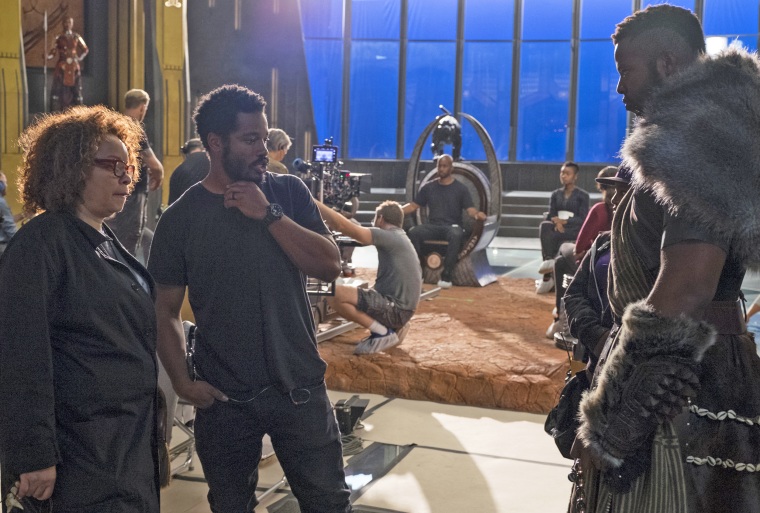Black filmmakers made history in 2018. A movie business that has historically been dominated by white men became a little less monochromatic over the last 12 months, as studios apparently became more receptive to public pressure to back projects from a more diverse group of filmmakers.
Fourteen percent of the directors of the top 100 grossing movies last year were black, according to a new report by the USC Annenberg Inclusion Initiative. That's a 270 percent increase over 2017 and a 200 percent increase from 2007 in terms of representation and comes after grassroots campaigns such as #OscarsSoWhite brought public attention to the lack of representation in Hollywood.
"All of the activism and attention surrounding the issue of diversity, inclusion and belonging has shown that the time has come," said Dr. Stacy L. Smith, the report's co-author. "This is the first time we're reporting a major change in representation behind the camera."
The push for greater diversity in the filmmaking ranks benefitted studios' bottom lines. Ryan Coogler's "Black Panther," Spike Lee's "BlacKkKlansman," and Steven Caple Jr.'s "Creed II" were all critical and commercial successes. And while Ava DuVernay's "A Wrinkle in Time" was a box office disappointment, the fantasy adventure represented an important milestone as the first $100 million production to be directed by a black woman.

But it wasn't all good news in terms of inclusion. Women continue to be given fewer directing opportunities than men. Only four of the top 100-grossing movies last year were helmed by female directors — Kay Cannon ("Blockers"), Abby Kohn ("I Feel Pretty"), Susanna Fogel ("The Spy Who Dumped Me"), and DuVernay ("A Wrinkle in Time"). That paltry representation is in line with historical trends. From 2007 to 2018, just 4.3 percent of all directors across the 1,200 top-grossing films were female, which translates into a ratio of 22 men to every one woman with a directing credit.
And women of color were barely given any chance to slide behind the camera. Only five black women, three Asian women and one Latina directed any of these 1,200 films over the last 12 years.
The USC study is the second this week to highlight the gender imbalance on major movies. A similar report from San Diego State University found that 92 percent of the top 250 highest-grossing domestic releases had no women directors, 73 percent had no women writers, and 27 percent had no women producers.
Hollywood scored a big hit with "Crazy Rich Asians," a romantic-comedy that made headlines for being one of the only big-budget studio films with an all-Asian cast. The film was directed by Jon M. Chu, an Asian filmmaker who also happens to be one of the movie business' most successful filmmakers, having overseen "G.I. Joe: Retaliation" and "Step Up 2: The Streets." Other Asian filmmakers haven't been as lucky. Across the 12-year sample, just 3.1 percent of the 1,335 directors studied were Asian.

The USC study also took a look at the make-up of media companies' board rooms and executive ranks. There was slight improvement at the upper echelons of power. Across all seven of the major media corporations that make movies -- a group that includes Disney, Sony, and Viacom — a quarter of the board members were female. That compares to just 18.8 percent in 2017. Going down the corporate ranks, women were most likely to have EVP, SVP and VP posts. They held just over 17 percent of the C-suite positions (CEO, CFO, CTO, etc.) at major media companies and 22.5 percent of president and chairperson roles at the film divisions.
Even if a female director managed to shatter the celluloid ceiling and get an opportunity to call the shots on a major movie, they struggled to bring follow-up projects to the multiplexes. Over the past 12 years, a total of 704 directors helmed one of the 1,200 top-grossing films, that translated to 658 men and 46 women. The vast majority of female directors, some 83 percent, only made one film within the top-grossing sample in comparison to 54 percent of their male peers. Tyler Perry was the most prolific, making some 17 films, while Anne Fletcher, the filmmaker behind "The Proposal" and "27 Dresses," had the most top-grossing credits of any female director with four films.
"Women aren't given as many chances to be hired again by studios, and that makes it more difficult for women to see this as a career path they can pursue in order to provide for themselves and feed their families," said Dr. Katherine Pieper, the study's co-author.
The Inclusion Initiative was launched by Smith over a decade ago to provide data and research into the lack of equality in the entertainment business. Smith hasn't just conducted studies. She has advocated for an inclusion rider, language that actors, producers, and directors can bake into their contracts, requiring that the movies and shows they make engage in a good-faith effort to employ minorities, LGBTQ actors, and women on screen and as part of the production staff. The rider got a global plug when Frances McDormand gave it a shout out during last year's Academy Awards broadcast.

There's a lot of ground that can be made up across all facets of production. Women were listed as producers on just 18 percent of the top 300 movies from the last three years — 1.6 percent of these credits were for women of color, 9.8 percent were held by men of color, and 16.3 percent were earned by white women.
The numbers were even starker when it came to below-the-line positions, the term for crew members who aren't producers, writers, or directors. Men comprised 97 percent of cinematographers, 84.5 percent of editors, 81.7 percent of production designers, and 97.7 percent of composers.
Among the major distributors, Warner Bros. was the only studio without a single 2018 release from a black director. Sony led the way with five films from black filmmakers, and Universal fielded the second most films from black directors with three movies. Within a few weeks, there will be one fewer major studio. Disney is absorbing Fox's film studio as part of a $71.3 billion merger. Smith said she was hopeful that the consolidation won't result in fewer films being made and fewer opportunities for female directors and people of color. She noted that Disney has made strides when it comes to representation, backing "A Wrinkle in Time" from DuVernay and "Black Panther" from Coogler, and also argued that the rise of streaming giants such as Netflix will pressure movie companies to make films that reflect the composition of their audience.
"It's not good to lose a studio and we'll have a critical eye on that," said Smith. "But my hope is that the rise of streaming platforms will provide a new set of checks and balances when it comes to inclusion."
